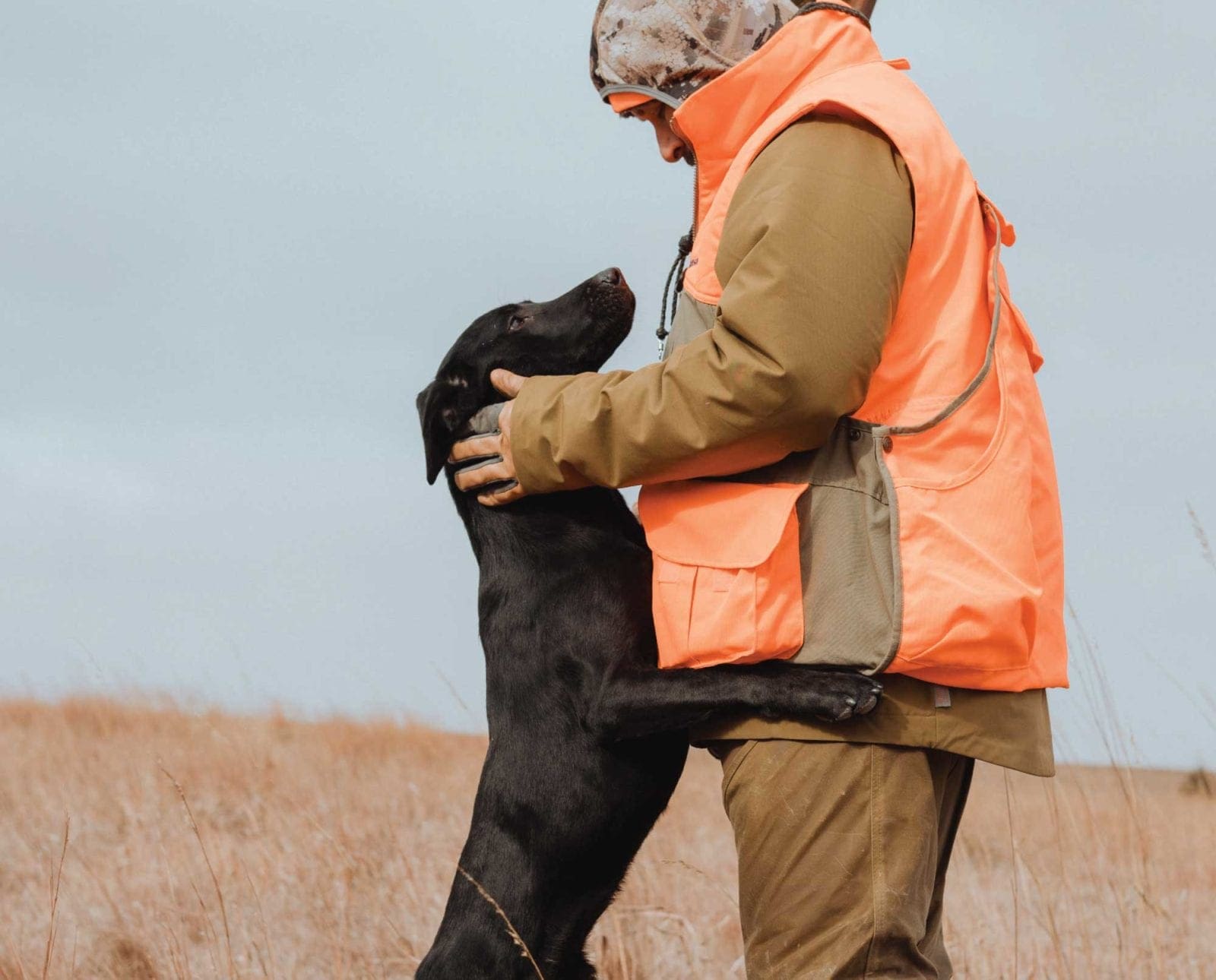Home » Hunting Dogs » Labrador Retriever – Bird Hunting Dogs Series
Labrador Retriever – Bird Hunting Dogs Series

Nancy Anisfield is an outdoor writer and hunting dog photographer,…
As the sporting dog with perhaps the most diverse talents, the Labrador Retriever’s popularity is well deserved.
Original purpose of the Labrador Retriever
Contrary to the name, the Labrador retriever descended from the smaller, short-coated type of St. John’s Water dog of Newfoundland where they worked with fisherman. They spent their time pulling nets, hauling ropes, and retrieving fish. The dogs were brought to England in the early 1800s where the breed and its remarkable retrieving instincts were further developed for both land and water hunting.
British Labs’ hunting style is characterized by a calm diligence. They acquired such a trait in response to the huge shoots, involving hundreds of birds, that are part of the early British field hunting tradition. The dogs had to be quiet and controlled at all times.
In America, European style shoots gave way to field trials and hunt tests which called for increased athleticism and drive. Breeders then developed lines suited to different types of upland or waterfowl hunting. The American Labs are said to have greater drive, although that manifests itself more in their big water duck work than in upland hunting. In upland hunting, the two types are pretty much equal.
Hunting style and temperament
Both types of Lab are capable flushers and retrievers; they can locate coveys of quail as readily as retrieve a downed mallard. Labs are popular pheasant dogs, working at a moderate pace within range of the gun. In the ruffed grouse woods, Labs’ “birdy” tail signals scent, alerting hunters to the birds’ presence.
The British Labs are wider with fuller chests, thick necks, and shorter legs. The American Labs are slimmer and faster with a longer muzzle, longer legs and an athletically agile build.
Labs are bright, sociable, companionable, biddable, outgoing, and even-tempered. Adaptable to many living and working situations, they have excellent stamina and a fine work ethic. Oh, and they love food.
Traits of the Labrador Retriever important to hunters
Size
The British breed standard height is 21.5” to 22.5”. The American standard is 21.5” to 24.5” (male and female is included in these ranges). The standard weight for male British Labs is 70-74 lbs.; for females it’s around 55 lbs. American Lab females run 55-70 lbs., males 65-80.
Coat
Labrador retrievers’ short, dense coats are designed to handle all types of weather and brush. Both types of Labs have a water-resistant double coat that usually likes to shed twice a year—spring and fall.
Maturity
Labs are often thought to be mellow, snooze-on-the-porch dogs. Like any breed, however, Lab puppies are high energy. Channel that early exuberance into training and field/water work, and the Lab will be an enthusiastic hunting partner at a notably young age.
Health risks
As a breed, the Labrador retriever has an excellent health reputation. Hip and elbow dysplasia, luxating patella (knee joint), and eye disease are the main concerns for inherited problems.
Finding a good breeder
As with many gun dog breeds, individual lines are often developed to suit one purpose or another—the show ring or the field. Certain characteristics are more important than others, depending on the breeders’ objectives. Hunters interested in getting a British or American Lab should seek out breeders who hunt and breed specifically for the field. It can also make a difference if the field breeders’ priority is field trials, waterfowl retrieving, or upland hunting.
Nancy Anisfield is an outdoor writer and hunting dog photographer, creative director for the Ugly Dog Hunting Company, member of the Pheasants Forever / Quail Forever Board of Directors, and co-owner of the Track2Wing Project which grants Action trackchairs to individuals with mobility challenges who want to train and hunt with bird dogs. She and her husband live in Hinesburg, Vermont, where their lives are governed by her two German shorthaired pointers and his two German wirehaired pointers.




I think the labrador might be the most perfect dog that exists, at least as we humans would define the “perfect dog”. Great for sport, but also great for families. I mean there’s a reason why when you think of the term “man’s best friend” you probably envision some variety of retriever.
Yes! When my daughter was learning to walk she would pull herself up into a standing positing by gripping my Lab’s fur. Owners of lesser breeds my object to this story, saying it’s not a good idea to let a kid pull the dogs fur like that. Newsflash: The dog liked it!